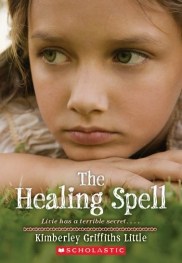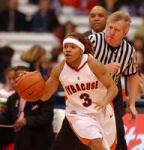After many years of taking writing classes and reading books about writing while I’ve struggled to learn the craft (a life-long pursuit!), I’ve come to realize that I have a knack for creating “beautifully realized settings”( said School Library Journal).
I adore developing the setting in each of my books and that’s probably because I’m in love with exploring the world, other cultures & people and history. Research means I get to Travel and a Trip means my antennae are on alert the entire time picking up cool tidbits.
My fourth book with Scholastic, The Time of the Fireflies, is also the fourth magical realism story I’ve set in the bayou/swamp country of Louisiana with Cajun culture, baby gators, and Spanish moss dripping from the oak trees. 
From the very first time I went out on a boat with a Cajun fisherman into the swamp and fed bits of chicken to eight-foot alligators sidling up to the boat, I was spinning a story in my mind within fifteen minutes. I knew I HAD to write about a girl who lived in this magical world with its hidden beauties and dangers.
After I spent three years reading everything I could get my hands on and taking another, longer research trip, I came home so inspired I drafted The Healing Spell in three weeks.
I’m in love with the beauty and mystery of that part of Louisiana (from Lafayette down along Highway 90 East to New Orleans) and I’ve visited often for more than 15 years now. I’ve been to practically every small town, eaten crawfish etouffee and gumbo ( I make a mean gumbo now!), adventured on boat trips with native fisherman on several bayous and read dozens of books about the Louisiana history, language, and customs. A journey filled with love and so many special memories.
I’m not saying that you have to delve that deeply into a locale to bring it alive in a story or novel, but whether I’m writing about the deserts of the Southwest or the ancient Middle East (ie. my recent novel, FORBIDDEN, Harpercollins) or a family living on the edge of the swamp, I do pay attention to setting in lots of little ways.
Tips for Creating a Setting that Feels like You’re Really There:
1. While out “on location” in the real world (even if it’s just a trip to the mall to listen to kids/teens interacting), pay attention to not only what your eyes are taking in, but the sounds of the place, as well as the smells, the atmosphere, the mood, the culture, speech/language, the food, and touch/textures (as in petting baby gators!), and then weave those details into your story.
2. Caution: Don’t ever stop your story, the action, or dialogue of your characters to spend a lot of time describing these details. Be sure to incorporate unique tidbits of setting naturally into the prose or the flow of the  “conversation”.
“conversation”.
Like this brief scene (On a a hot summer night Livie is out frogging with her daddy): A cloud of mosquitoes flew into my face. One even raced straight into my mouth. I spit into the water and then tightly shut my lips. Daddy chuckled while he watched me flapping my arms. “Those mosquitoes so thick you gotta tie yourself to the boat so they don’t carry you off.”
Someone in California or Wyoming or Paris or Victorian England is going to describe an evening of annoying mosquitoes entirely differently.
3. Your character lives in his/her setting. Be sure to use the language that character would use, the language of “home” to them.
4. Metaphors/Similes: Whether your story takes place in Boston, the Southwest deserts, ancient Egypt, San Francisco, a tropical island, the Florida Keys, or the plains of Kansas, use language and words a character would use in those locales. For a character that lives in small-town Alabama, they’re not going to use the same adjectives/descriptions to describe their l
ife and their world and their point of view as the child of a fisherman living on the seashore in Maine is going to.
5. Relate how your character interacts with their setting. What do they think of where they live? What do they notice? What’s importan
t to someone of that setting? What do they love/hate about where they live and how are those emotions manifested?
Next time you read a novel or write your next chapter pay attention to how the setting is being used to bring a character or their world more fully to life. Can you feel the sweaty, blistering humid summer day, or the biting cold Vermont winter while tramping through the woods on snowshoes?
Setting makes any novel richer in a myriad of ways, and will bring a unique freshness to your own stories, too!
Kimberley Griffiths Little’s novels with Knopf and Scholastic have won several awards. The Time of the Fireflies was named a Bank Street College Best Books of 2015, a Whitney Award Finalist, a Letters of Mormon Arts Award Finalist, and was recently chosen for the William Allan White Kansas State Children’s Choice List for 2016-2017.
Find Kimberley on Facebook. and Twitter @KimberleyGLittl. Teacher’s Guides, Mother/Daughter Book Club Guides, and fabulous book trailers filmed on location adorn Kimberley’s website.







 ventures of the Family Fletcher
ventures of the Family Fletcher


















